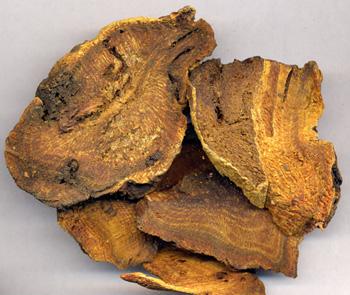Da Huang
From Wikiwel
See also : Rhubarb
Other Names : Rhubarb, Radix et Rhizoma Rhei, 大黄
Rhubarb root has a long history in traditional Chinese medicine; its uses were first documented in the Divine Husbandman's Classic of Materia medica, which was written approximately 2,200 years ago.
Special Precautions of Da Huang
- Rhubarb should not be taken by children under the age of 12, or by women who are pregnant or nursing. It should also not be taken by patients with acute or chronic intestinal disorders, such as Crohn's disease.
- The most common side-effect noted with rhubarb is abdominal cramping; however, this condition is often relieved by reducing rhubarb dosage. Excessive use of rhubarb can lead to nausea, vomiting, diarrhea, and possible liver and kidney damage. Long-term use can lead to cirrhosis of the liver and hypokalemia (a metabolic imbalance characterized by low potassium levels in the blood).
- Due to a possible loss of potassium, rhubarb root should not be taken in combination with cardiac medications, diuretics or steroids. Loss of potassium can be decreased by combining rhubarb root with licorice root.
- As always, make sure to consult with a licensed, qualified health care professional before taking rhubarb or any other dietary supplement.
Benefits and uses of Da Huang are
Originally, herbalists used rhubarb as a laxative, and to evacuate the bowels and improve the digestive tract. Rhubarb has also been found useful in treating jaundice, endometriosis, and (topically) burns and skin ulcers. Furthermore, rhubarb has the ability to fight infectious fungi such as candida, and infections of the lungs and eyes.
- Purge heat.
- Loosen the bowels.
- Clear heat from the blood and invigorates blood.
- Clear toxins.
